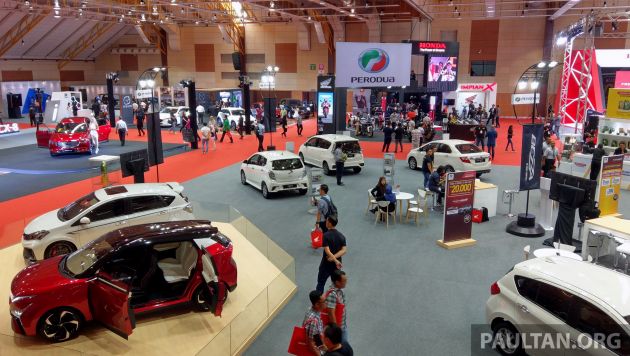The 2020 total industry volume (TIV) forecast of 607,000 units made by the Malaysia Automotive Association (MAA) last January may have sounded cautious, offering only modest growth from the 604,287 units achieved in 2019, but perfectly attainable.
Of course, the arrival of a virus put paid to those best laid plans, although the eventual outcome was far from the massive setback that was projected in May, when the forecast was revised down by a third to 400,000 units.
The introduction of the SST exemption on the sales of new CKD and CBU cars in June, which was to run until December, led the association to believe that the numbers would improve to the tune of 470,000 units. In the end, it surpassed that comfortably, with the TIV reported for the year finishing at 529,434 units.
Nonetheless, the deficit of 74,853 units from the previous year meant that most brands inevitably failed to match the numbers seen in in 2019. Here’s a quick breakdown of how brands performed in 2020.
Perodua, which has been leading the market since 2006, continued to hold on to the top position despite a 8.4% drop in sales last year. The automaker managed to sell 220,163 units, which was 20,178 units fewer than the 240,341 cars it sold the previous year.
While short of its initial 2020 forecast of 240,000 units, the eventual 2020 total exceeded the 210,000-unit revised projection it revealed in August. Impressively, while the overall market contracted, the national carmaker managed to increase its market share from 39.8% in 2019 to 41.6% last year.
Finishing second again was Proton, which had plenty of reason to be pleased with how 2020 shaped up. It was one of the handful of passenger car brands that gained traction in terms of sales, the 108,524 units it shifted last year being 8,341 units more than the 100,183 units it managed in 2019.
While the 8.4% improvement isn’t a big a jump as that accomplished in 2019, where it recorded a 54.7% increase in sales compared to 2018, the fact that it managed to record higher numbers in a topsy-turvy year is testament to the fact that buyers are flocking back to the brand.
The company also had the honour of being the highest gainer last year, its market share increasing to 20.5% from 16.6%. A bit of additional trivia for those into numbers and percentages – Perodua and Proton now command over a 60% share (62.1%, to be precise) of the market, the highest since 2003.
Honda kept its third place, its 60,468 units good enough to keep it ahead of Toyota (58,501 units), but the brand sold 24,950 units (or 29.2%) less than it did in 2019. Nissan sales also dropped to 58,501 units, down 33.3% from the previous year. Naturally, all three brands saw their market share contract.
The few gainers included Mazda (12,141 units) and Mitsubishi (9,163 units), with the numbers managed representing a 4.2% and 12.6% increase, respectively. Elsewhere, Subaru (-57.3%), Peugeot (-45.4%) and Kia (-77.9%) suffered major drops, and brands such as Volkswagen (-39.2%) and Hyundai (-37.9%) also had a very soft year.
As for the premium brands, Volvo was the only main player in the segment to record a green arrow – it managed to sell 1,950 cars last year, 3.6% more than the 1,883 units sold in 2019. The table also finally shows complete BMW (and MINI) numbers for the year. The brand had said last year it had switched to a quarterly reporting, but the numbers had remained stuck going well past mid year.
Also, while the table shows very striking numbers in red for Mercedes-Benz, it is worth noting that the company stopped reporting its numbers after Q1 last year, and so its total remains as from then. The final number of cars sold by the brand remains undisclosed.
How will the market fare this year? Well, while there seems to be no end in sight to the pandemic at this juncture, the MAA is optimistic that the market will rebound in 2021. The association has confidently forecast that the TIV will rise this year by nearly 8% to 570,000 units, with the growth very much aided by the SST exemption that will run until June 30.
Related Cars for Sale on
Source: Read Full Article



















